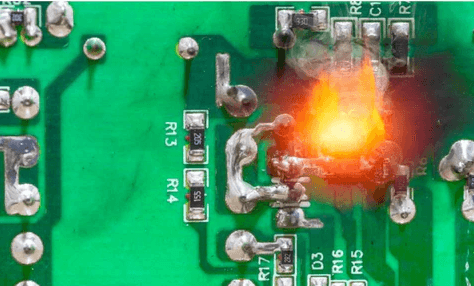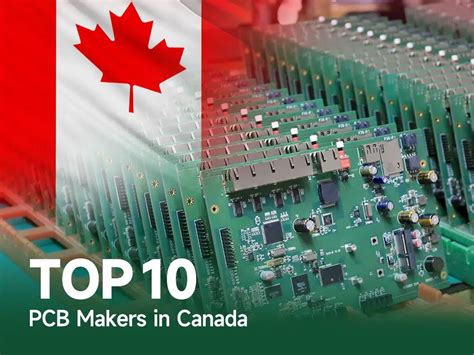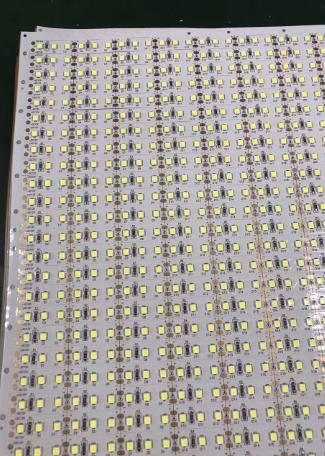Revolutionizing Technology: The Future of Advanced Circuits Assembly
Key Takeaways
The landscape of advanced circuits assembly is evolving, driven by technological advancements that are transforming the electronics manufacturing industry. As manufacturers embrace innovative techniques such as automated pcb assembly (PCBA) processes, they are experiencing significant improvements in efficiency and accuracy. The sector is seeing the integration of smart robotics and artificial intelligence, which not only streamline production lines but also enhance the quality of assembled circuits. Furthermore, there is a marked shift towards sustainable practices in pcba production, aiming to minimize waste and energy consumption. By adopting these emerging trends, companies are positioning themselves to meet the increasing demand for high-performance electronics, paving the way for future growth and innovation. Ultimately, the focus on advanced circuits assembly underscores a broader commitment to maximizing operational efficiency while pushing the boundaries of design capabilities in electronics.
Introduction to Advanced Circuits Assembly
The landscape of electronics manufacturing is rapidly evolving, and at the heart of this transformation is advanced circuits assembly. This process encompasses the design, development, and integration of printed circuit boards (PCBs), which serve as the backbone for countless electronic devices. PCB assembly (PCBA) techniques have become increasingly sophisticated, allowing for denser layouts and more complex functionalities. As technology progresses, manufacturers are adopting new methods to enhance circuit integrity and overall performance.
Innovative approaches such as surface mount technology (SMT) and through-hole technology are reshaping how components are attached to PCBs. The integration of automation and robotics in the assembly line has further accelerated production speeds while ensuring high accuracy in placements.
“The future of electronics manufacturing depends on embracing these advanced techniques to remain competitive.”
Furthermore, trends such as miniaturization, where devices become smaller yet more powerful, require specialized assemblies that often leverage advanced circuits. As we move towards a more connected world with the Internet of Things (IoT), the need for efficient PCBA solutions will only continue to grow.
In summary, as advanced circuits assembly methods evolve, they significantly impact production efficiency and design capabilities within the electronics sector. Embracing these innovations will be crucial for manufacturers aiming to meet the demands of a fast-paced technological landscape.
| Aspect | Traditional Assembly | Advanced Circuits Assembly |
|---|---|---|
| Speed | Moderate | Fast |
| Complexity | Limited | High |
| Cost Efficiency | Higher | Lower |
| Flexibility | Low | High |
As demonstrated by various industry case studies, those who harness these advancements in PCB assembly will likely lead the future of electronics manufacturing. The ongoing integration of new technologies not only enhances product efficiency but also drives innovation across different sectors whether in consumer electronics or industrial applications.
Innovative Techniques in Circuit Assembly
The field of advanced circuits assembly is undergoing a transformation, largely due to innovative techniques that enhance the pcb assembly process. One such technique is the use of automated pick-and-place machines, which optimize the placement of components with incredible precision. These machines are essential for improving the accuracy and speed of pcba, thereby reducing production times and enhancing overall productivity. Additionally, techniques such as surface-mount technology (SMT) have revolutionized how components are attached to circuit boards, allowing for smaller, more densely packed designs that offer greater functionality in compact spaces.
Moreover, advancements in 3D printing are enabling manufacturers to create prototypes more rapidly and cost-effectively. This technology not only allows for a quicker turnaround but also fosters innovation by enabling engineers to experiment with complex geometries that traditional methods might not easily accommodate. Another notable technique is the implementation of flexible circuits, which provide unique opportunities for modern electronics, particularly in wearables and portable devices. These flexible designs can bend and twist without compromising performance, further pushing the boundaries of what electronic devices can achieve.
The integration of Artificial Intelligence (AI) into quality control processes plays a pivotal role in ensuring high standards in circuit assembly. By leveraging machine learning algorithms, manufacturers can detect defects early on in the production cycle, minimizing waste and significantly reducing costs associated with rework or scrap materials. Overall, these innovative techniques not only improve efficiency but also pave the way for future advancements in electronic design and functionality, establishing a robust foundation for advanced circuits assembly moving forward.
Emerging Trends Shaping the Future
As the demand for more sophisticated electronics continues to surge, the advanced circuits assembly sector is witnessing transformative changes. A significant trend is the rise of automated methods in pcb assembly, which enhances precision and mitigates human error. Technologies such as machine learning and artificial intelligence are becoming integral to optimizing production processes, resulting in improved yield rates and lower costs. Additionally, the advent of smaller, more complex designs is driving innovation in pcba, enabling manufacturers to produce specialized components that cater to niche markets. Sustainability is also taking center stage; manufacturers are increasingly adopting eco-friendly materials and processes, ensuring that advanced circuits assembly becomes not only efficient but also environmentally responsible. The integration of these trends signifies a pivot toward a future where electronics manufacturing can meet growing consumer needs while adhering to high standards of quality and sustainability. This alignment underscores the potential for further innovations that will likely redefine how electronics are designed and assembled in years to come.
The Impact of Advanced Circuits on Efficiency
Advancements in pcb assembly techniques have significantly reshaped the landscape of electronics manufacturing. By utilizing innovative methods such as surface mount technology and automated pick-and-place systems, manufacturers can enhance production speed and precision. This evolution not only minimizes error rates but also streamlines the overall pcba process, allowing for a higher yield and reducing waste. As technologies continue to progress, the integration of smart manufacturing principles, such as real-time monitoring and data analytics, further boosts operational efficiency. These improvements lead to quicker turnaround times for product development and more sustainable practices in electronics production. Ultimately, the impact of advanced circuits assembly on efficiency is profound; it paves the way for more agile manufacturing environments that can rapidly adapt to market demands while ensuring high-quality outcomes that meet modern consumer expectations. Through these transformative practices, companies are not only optimizing their workflows but also redefining their competitive edge in an increasingly demanding industry landscape.
Advancements in Design within Electronics Manufacturing
The evolution of pcb assembly techniques has significantly transformed the landscape of electronics manufacturing. As technology continues to advance, the integration of pcba (printed circuit board assembly) into design processes has led to more efficient production lines and enhanced device functionality. Modern design methodologies leverage cutting-edge software and hardware, allowing engineers to iterate more quickly and explore creative solutions in the assembly process. These advancements enable the fabrication of increasingly complex circuit designs while minimizing the footprint and maximizing performance. Additionally, automation plays a pivotal role in this transformation, as automated machinery can handle sophisticated pcb assembly tasks with precision, ultimately improving quality and reducing human error. As we delve into emerging technologies, it becomes evident that these innovations are not only streamlining manufacturing processes but are also fostering a new era where electronics can be both highly efficient and intricately designed. By focusing on collaboration between design teams and manufacturers, the future of pcba will likely see exponential growth in both capability and application scope, reinforcing its critical position within the global technology ecosystem.
Case Studies: Success Stories in Circuit Assembly
In evaluating the transformative power of advanced circuits assembly, several case studies illustrate how organizations have effectively leveraged this technology to enhance their operations. For example, a leading electronics manufacturer implemented innovative pcb assembly techniques that reduced production time by 30%. This shift not only optimized their workflow but also delivered high-quality products faster to market. Another notable example involves a startup specializing in medical devices, which adopted cutting-edge pcba methods and saw a significant increase in yield rates. These advancements enabled them to overcome common challenges in quality assurance and significantly improved their overall efficiency. Such success stories highlight the potential of advanced circuits assembly to reshape traditional manufacturing paradigms, allowing companies to stay competitive in an ever-evolving landscape. The integration of automation and advanced technologies into pcb assembly processes has been pivotal, demonstrating that the future of electronics manufacturing is bright and ripe with possibilities for innovation and growth.
Challenges and Solutions in the Industry
The pcb assembly and PCBA sectors face a myriad of challenges that complicate the path toward innovation and efficiency. One significant hurdle is the rapid pace of technological advancement, which often outstrips existing manufacturing processes. As designs become increasingly intricate, ensuring that assembly methods can keep up is paramount. Furthermore, the shortage of skilled labor poses an additional challenge; technicians with expertise in advanced circuits assembly are essential for maintaining high-quality standards. In pursuit of solutions, companies are now investing in automation technologies that streamline operations while minimizing human error. By integrating advanced robotics and AI-driven technologies, organizations can increase throughput and ensure superior quality in their pcba processes. Additionally, adopting modular designs can enhance flexibility, allowing manufacturers to adapt quickly to changing market demands. As these solutions evolve, they not only address current bottlenecks but also pave the way for a more agile manufacturing landscape in electronics, ultimately fostering innovation and greater efficiency within the industry.
The Future Landscape of Electronics Manufacturing
The landscape of electronics manufacturing is poised for significant transformation as advanced circuits assembly continues to evolve. Key among this evolution is the integration of PCB assembly techniques that enhance precision and efficiency in production. As tools and methodologies improve, we see that PCBA processes are becoming increasingly sophisticated, allowing for smaller, more complex designs. This shift not only facilitates the miniaturization of devices but also ensures that manufacturers can meet the growing demand for high-performance electronics. Furthermore, innovations such as automation and artificial intelligence are streamlining operations, reducing lead times and minimizing human error. As these trends unfold, companies embracing these advancements in advanced circuits assembly will likely benefit from increased operational excellence and a stronger competitive edge in a rapidly evolving market. Understanding this dynamic will be crucial for stakeholders looking to navigate the complexities of future manufacturing demands effectively.
Conclusion
As we reflect on the advancements in advanced circuits assembly, it’s clear that these innovations are steering the future of electronics manufacturing. The rise of pcb assembly processes has enabled companies to enhance productivity while maintaining quality. Techniques such as surface mount technology (SMT) and automated optical inspection (AOI) are pivotal, ensuring that components are assembled with unparalleled precision. Furthermore, trends like miniaturization and eco-friendly practices are increasingly influencing designs, resulting not only in more efficient pcba but also in sustainable manufacturing solutions. The integration of artificial intelligence into assembly lines promises to further optimize efficiency by predicting potential failures and minimizing downtime. As we move forward, embracing these emerging trends will be crucial for industries looking to thrive in this rapidly evolving landscape, ensuring they remain competitive and relevant in a technology-driven world.
FAQs
What is advanced circuits assembly?
Advanced circuits assembly refers to the process of efficiently integrating complex electronic components onto a printed circuit board (PCB). This process has evolved to significantly improve the performance and reliability of electronic devices.
How does pcb assembly differ from traditional methods?
Compared to traditional methods, pcb assembly utilizes innovative techniques such as automated processes and advanced materials, enhancing both precision and speed in the manufacturing process.
What are the benefits of using PCBA?
Using PCBA (Printed Circuit Board Assembly) offers numerous benefits, including reduced production costs, improved design flexibility, and enhanced functionality, allowing for more complex electrical designs.
What emerging trends are influencing advanced circuits assembly?
Emerging trends such as miniaturization, increased integration of IoT devices, and sustainability initiatives are strongly influencing advanced circuits assembly, driving manufacturers to adapt their strategies for efficiency and compliance.
How does advanced circuits assembly impact efficiency in electronics manufacturing?
By implementing advanced circuits assembly, manufacturers are able to streamline workflows, reduce waste, and optimize resource use. This leads to lower manufacturing costs and shorter delivery times.







